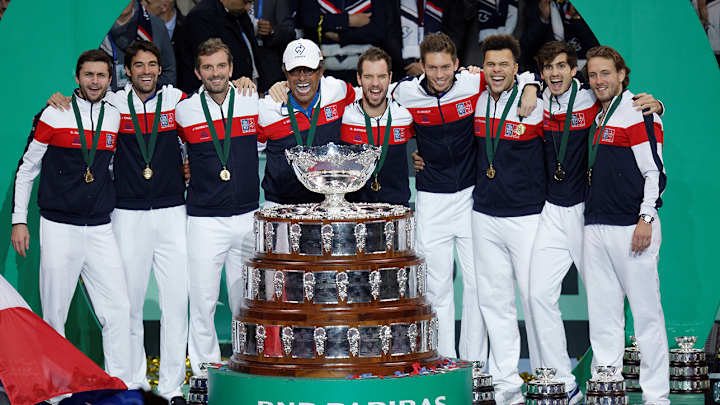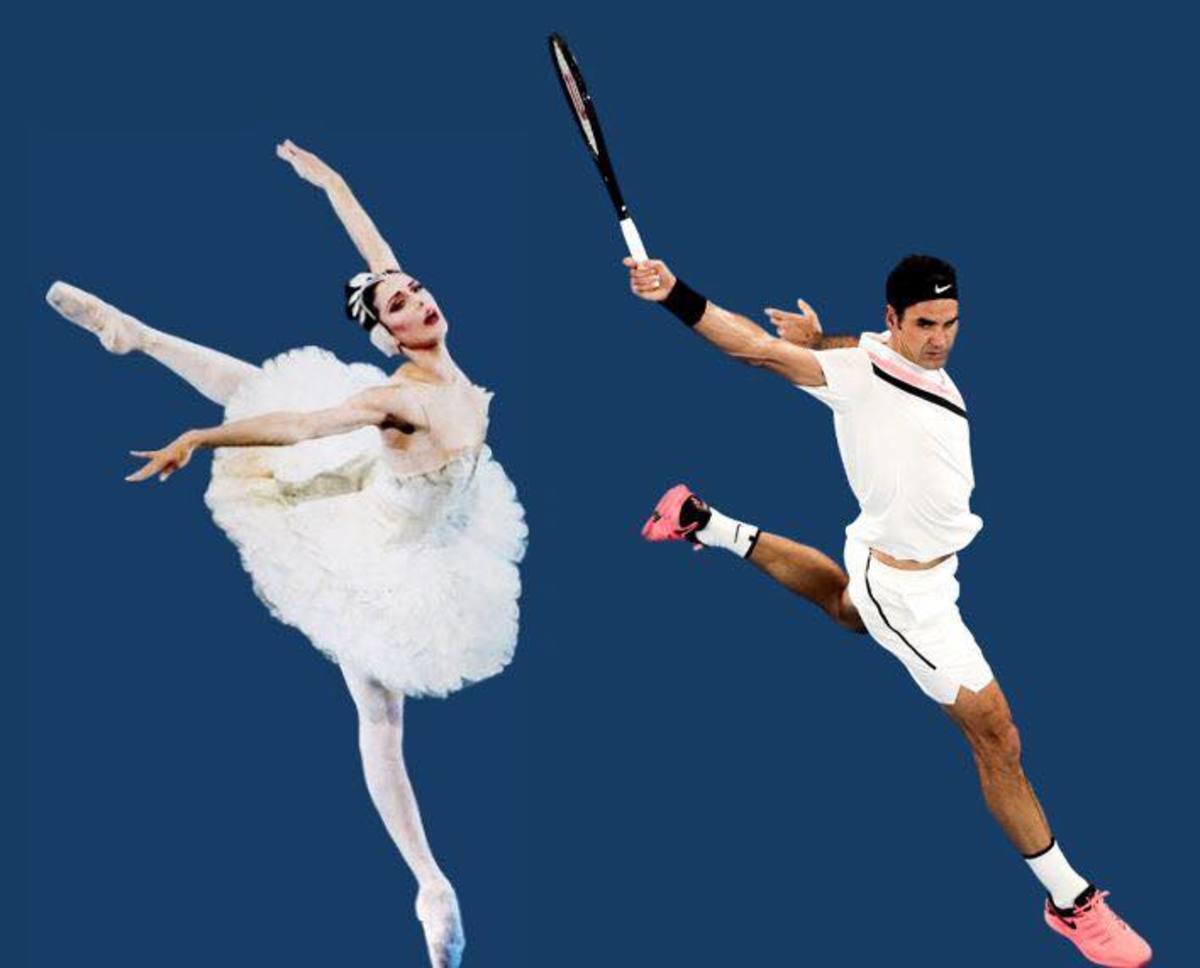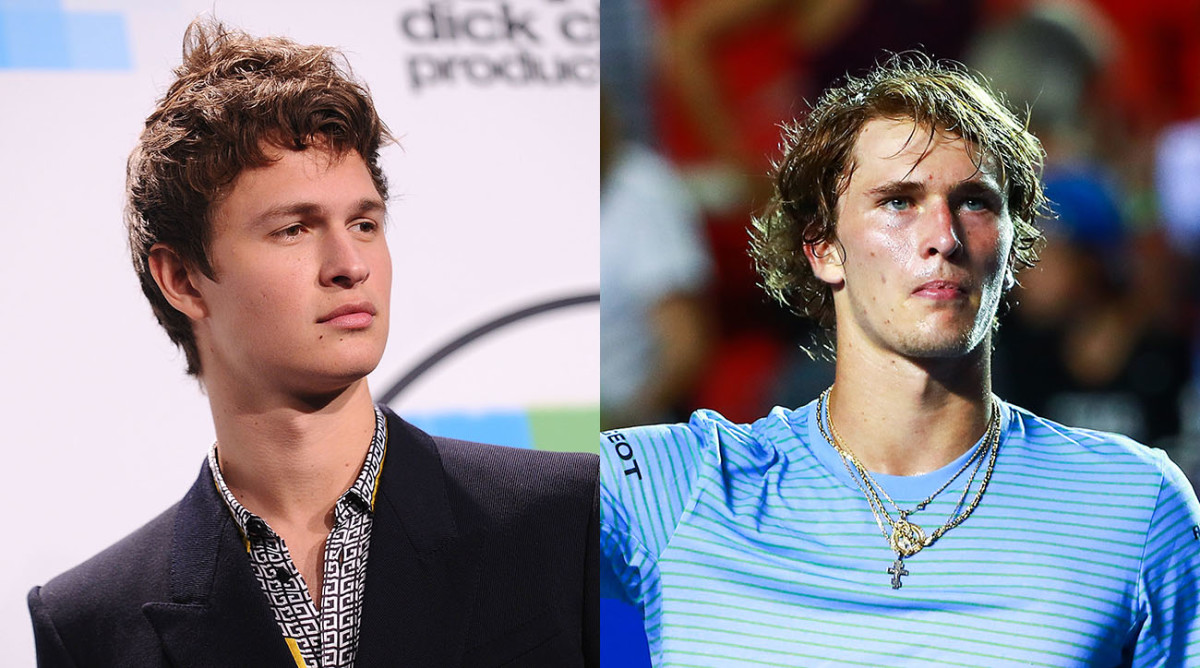Mailbag: Breaking Down the Details of the Proposed Davis Cup Changes

Right to the questions...
Have a question or comment for Jon? Email him at jon_wertheim@yahoo.com or tweet him @jon_wertheim.
I was curious what you think about the new Davis Cup format? Does this breathe new life into Davis Cup or does it hasten its demise?
—Matt D., New York
• Spare a thought, first, for Frances Tiafoe. The 20-year-old American won his first title, beating Juan Martin del Potro en route to taking Delray. Great result. Great story. Great kid….and then, whoosh, the news cycle rotated to this radical Davis Cup change and Tiafoe scarcely got his moment.
Anyway, yes, the big news this week: plans for “the transformation” of Davis Cup. Before we explore the particulars, some credit is due to the International Tennis Federation. After years (decades?) of stubbornly refusing to change and (willfully) blinding themselves to the obvious signs that the Davis Cup was losing relevance and prestige—not least among the players themselves—the organization finally offered a sweeping alternative. Dave Haggerty, the new ITF head, all but promised this. And he appears to have delivered.
While this is a mere proposal and must be voted through in August—which is no given—the fact that the ITF has acted with uncharacteristic conviction is, in and of itself, encouraging. Crassly, it's also encouraging that tennis can attract this kind of capital investment. More on the financials in a second.
The actual proposal for a one-week shoot-em-out can be picked apart under cross-examination. Are the same players, who gripe—not wrongly—about tennis’ grueling schedule demands, willing to converge on Singapore in November? (By the way, does it really make sense to go to Asia to debut an event like this when sport’s nerve center is Europe?) Then again, given the demand for so many courts, where the heck DO you host this thing, especially that time of the year?
More questions….Can you really fit an 18-team event featuring more than 100 players into a week? Do you lose the essential, home-and-away flavor of Davis Cup, when, say, Canada plays Slovenia ….in Singapore? What does this do to the World Team Cup, which was supposed to be held in January and put to Board vote in late March? For that matter, what does this do to the Laver Cup?
Money, however, talks. And in this case it screams. Spearheaded by Barcelona football player Gerard Pique, a group is underwriting this event for, reportedly, $3 billion over 25 years. That’s money akin to starting a new Grand Slam.
That kind of money does a lot of things. A) It induces players. Even tired, physically beat-up players. B) It leaves money for marketing. Part of the Davis Cup’s current is that the fluid schedule makes it tough to promote. That won’t be the case with a date and location that won’t move. C) Some of that money can fanned to federations, which get so much funding under the current model. D) It makes ticket sales all but irrelevant.
Again, this is a proposal, not a done deal. And, again, this model—radical by any measure—is not without its flaws. But the old was so deeply flawed and outdated, rendering the event less relevant which each year, that it was “innovate or die.” Fortunately, finally, the ITF chose the former.
Speaking of silly money….
Jon: Now that the case has been settled, what do you think of Genie Bouchard’s against the USTA?
—Carl, Calif.
• For those who missed it, after more than two years of saber rattling, Genie Bouchard’s suit against the USTA went to trial. (Credit to Dan Kaplan for the excellent, if bemused, coverage.) After an unfavorable ruling on the negligence phase, the USTA settled before damages. How much did Bouchard get? I’ve heard two different figures, but I say with confidence that it was considerably more than the $3.3 million Novak Djokovic and Flavia Pennetta received that year for winning the entire tournament.
This was less a case of Bouchard’s avarice or the USTA’s negligence than it was an indictment of the U.S. legal system. This should have been settled days after the tournament. But this had all the ingredients for wasteful litigation. One the one side, you had a celebrity plaintiff, a flamboyant lawyer taking the case on contingency. Where was the incentive to settle? Bouchard wasn’t paying accrued legal fees, just a percentage of the eventual settlement. And the lawyer was getting free exposure every time the case was referenced. Bouchard’s ranking may have gone into free fall, but this cut both ways. Was it all the more absurd that a player ranked outside the top 100 was demanding millions? Or did her plummeting ranking support her claim that her career suffered on account of her fall?
The USTA has a long track record of settling suits; but in this case, damages sought were so preposterous—presupposing that Bouchard would have won the tournament and cashed in millions in bonuses if only she had not fallen—that it could not have capitulated. (It would also have set a terrible precedent. If every player injured on site knew they could get an eight-figure payout, you can imagine the potential liability.)
So what happens? Instead of quick and routine settlement, neither side is incentivized to put a crowbar in the runaway train that is litigation. Soon millions have been spent and years have elapsed. Soon it’s “in for a dime, in for a dollar,” and both sides have expended so many resources that you may as well roll the dice with a jury. Everyone loses but the lawyers.
Lost in all this: what impact has this—by “this” I don't mean a head injury, but distracting, protracted litigation—have on Bouchard’s career? A former top 10 player, she is declining a rate that defies quantum physics. If settling this suit enables her to reclaim her career, she truly wins.
Thanks for your Mailbag answer to the Young/Harrison controversy. I haven't seen anyone else in the mainstream media put the incident in context. Harrison has a history of confrontation with fellow players in the last six months and known "cultural insensitively" (Re: defending Sandgren, etc). While Young (the accuser) gets vilified for a lack of evidence, a "fiery" bully remains supported by the PR tennis machine.I think this is the very definition of racism.
—Jason
• Whoa. It’s not a question of support or non-support. (And the “tennis PR machine” has been in the shop since the 1980s.) It’s a question of a charge being made—an intensely serious charge—without supporting evidence. Again, Harrison may have plenty to answer for. But in this specific situation, there’s nothing—at least not as now—to corroborate that the accuser had a basis for his accusation.
Quick note: I play in a tennis league with a ball boy who worked the Harrison-Young match in Long Island. He reported that he and others working the match heard every word and there was no racial slurs/language from Harrison. The umpire quickly brought them all together and those working the match were uniform in this view. While I was disappointed to learn of Harrison's Sandgren defense and other confrontations, and can't imagine what Donald Young's life experience has been in a homogenous sport, the facts do matter even in this difficult context.
—J.
• Thanks. You raise two points that, while conflicting, we would do well to consider. (And come pretty close to mirroring my views.) Consider Donald Young’s life experiences for a moment. Before insisting that this was a fabricated account or a hoax, leave open the possibility that Young’s interpretations and intuitions might have been more subtle. And it’s easy to see how Harrison’s history would have made Young especially sensitive and prone to take offense.
At the time same, facts and evidence matter. Young leveled a charge that was not supported by evidence. And—just as problematic—did not make himself available or accountable after his provocative tweet.
Thanks for sharing that heartwarming Dick Enberg story last week. I never had the pleasure of meeting the man, but it seems we should all strive to have half the character that man had. My question is regarding one record that Federer still has to chase: Jimmy Connors' 109 career titles. With Federer winning his 97th last weekend, there's been much debate over whether he can break this particular record. Your thoughts?
—Matt Marolf, Long Island City, N.Y.
• I would submit that this is one of those records that is not quite “apples to apples.” Different playing tours, different times, different playing conditions and schedule demands. Big difference physically between playing—with gut strings and not polyester—this spring schedule, as Connors did in, say, 1979: Birmingham (Alabama, not UK), Philadelphia, Rancho Mirage, Boca Raton, Delray Beach, Memphis, New Orleans, Tulsa, Las Vegas, Dallas.
That’s 10 events without having to get on an international fight, without more than three hours time difference. (True, you could turn around and argue these guys were not flying privately nor traveling with their private nutritionists and physios….”Intergenerational comparisons: fun, but probably pointless!”)
I was surprised to see no mention of Petra Kvitova in this week's Mailbag. This time last year, she was recovering from what very well could have been a career-ending injury sustained under horrific circumstances. This week, she won her second title in a row; returned to the top 10; beat the likes of Wozniacki, Muguruza and Svitolina; and is on a 13-match unbeaten streak dating back to the Australian Open. C'mon Jon—that deserves at least as much attention as a discussion of the ideal tennis body, no?
—Andrew Beck
• Indeed she does. Great story. And, of course, the next person to say something uncharitable about Kvitova will be the first. She may not have been in last week’s Mailbag, but she will be appearing as our next guest on the SI/Tennis Channel Podcast.
I think it’s funny when people consider David Ferrer an insult as a upside comparison to the their favorite young, up-and-coming player. Sure he hasn’t won a Slam, but the dude has won 27 titles. Not many active 30-and-under players will win that many titles. And Ferrer won those titles in an era when titles have been hard to come by.
—James B.
• James sent this after Ferrer beat Andrey Rublev in Acapulco. No argument here. Ferrer is 35, grinding away, and STILL in the top 40. We say it all time: fans—wholly justifiably—adore Federer and Nadal and Serena. But we’re talking one-in-a-billion talents. (Actually, that still probably shortchanges it.) If you are a junior player and want a player to emulate, take a long, hard look at Ferrer. He’s 160 lbs. He was kissed by neither the talent gods nor the genetic deities. And by virtue of sheer hard work and persistence, he has turned in a long, honorable, and financially remunerative career.)
Why didn’t you ask Harrison what he said?! It was left hanging there, begging to be asked and you wouldn’t do it. Disappointing!
—Phyllis
• Fair enough. My esteemed colleague, Jamie Lisanti, razzed me for that as well. (Do the kids still razz? Does anyone still use that word?) I was under the impression that Harrison had addressed that already. According to him, he cursed and made unflattering references to Young’s height, but he did not say anything racial in nature. But, yes, that would have been a logical question to pose.
In light of the Young-Harrison confrontation why wouldn't the tours consider placing an audio recorder on every umpire's chair? It's not like these would be as expensive as adding Hawk-Eye to every court and it would clear up any disputes like this. Thanks.
—Blake Redabaugh, Denver, Colo.
• I think it’s less a function of cost so much as it's the potentially chilling effect that audio might have on candid exchanges between the chair and the players. Would the players want this? I imagine their union would want to consider the pros and cons before…oh, wait, never mind.
Shots, Miscellany
• I suspect many of you have seen this by now but check out this Federer image:

• A few of you asked so here’s the link to the Dallas Mavericks story.
• Press releasing, Part 1: This past weekend, tennis stars Serena and Venus Williams, along with Serena’s husband and Reddit co-founder Alexis Ohanian, world-renowned fitness personality and Insanity creator Shaun T, and retired NFL Pro Bowl offensive lineman Bryant McKinnie competed at the Spartan South Florida Sprint Weekend for a noble cause. The group ran this event to help bring justice and awareness to the homicide of 21-year-old University Park, IL native, Jalen Talbert. This was Serena’s second Spartan Race of the season, competing in the Spartan SoCal Super and Sprint Weekend on Jan. 27-28. Commenting on an Instagram story about her tennis skirt wearing sister, Serena joked that it would be the first and last time you’d see her sister Venus in pants.
• Press releasing, Part 2: Tennis ace Kyle Edmund has become a new ambassador for Great Ormond Street Hospital Children’s Charity (GOSH Charity), and paid a special visit to patients and families at the hospital to mark the start of his support. The British tennis star, who last month reached the Australian Open semifinal, has taken on the charity role after being moved by the story of GOSH patient James ‘Jimmy’ Shaw, who died in 2016. James’ parents Pete and Emily Shaw have raised £170,000 for GOSH Charity in James’ memory since they set up the ‘Little Jimmy Brighter Future Fund’ in 2016. Kyle will support this special fund as part of his role as a GOSH Charity ambassador, and met children recovering from surgery at GOSH on his first visit.
• Press releasing, Part 3: Former Wimbledon and U.S. Open champion Lleyton Hewitt and former world No. 2 and 2000 Olympic silver medalist Tommy Haas will join the PowerShares Series champions tennis circuit in 2018, InsideOut Sports & Entertainment, the organizers of the PowerShares Series, announced today. The PowerShares Series is the North American tennis circuit for champion tennis players over the age of 30. The series of one-night tournaments will feature 10 events in 2018. The full schedule of tournaments will be announced March 1.
• Fifty years since the Olympic Games in Mexico City, NBC Olympics will bring viewers back to that tumultuous and politically-charged year with a 90-minute documentary entitled 1968. Four-time Olympic gold medalist and 23-time Grand Slam singles champion Serena Williams narrates the film, which makes its broadcast television debut Sunday, Feb. 25, at 4:10 p.m. ET on NBC.
• The ATP has announced the 2017 ATP Challenger Tournaments of the Year, with players voting two of their favorite Challenger Tour stops in Germany (Braunschweig and Heilbronn) and one in Canada (Vancouver) from the 155 tournaments in 41 countries staged last year.
• Giving equal time to passionate USTA critic Javier Palenque.
• The ITF today announced the appointments of Rennae Stubbs of Australia and Andre Sa of Brazil as ITF player relations consultants. Their role, as part of a new Player Relations department in the ITF, will be to strengthen the ITF’s ties with players, coaches, agents, the tours and tournament organizers.
• The USTA Foundation (USTAF), the national charitable arm of the United States Tennis Association (USTA), today announced that it raised a record $9 million in 2017 through a variety of fundraising efforts. These funds will be used to support National Junior Tennis and Learning (NJTL) programs nationwide through multiple initiatives and activities, including NJTL Excellence Teams, STEM and ACE curriculums, programming and capacity-building grants, and college scholarships. In 2017, hundreds of tennis and education programs and students were awarded more than $3.3 million in grants and scholarships.
• This week’s LLS: Ansel Elgort and Sascha Zverev

